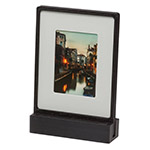Introduction
Welcome to the realm where fashion and technology intertwine – the world of 3D printed fashion. This captivating trend is not just a passing fad; it has the potential to revolutionize the entire fashion industry. 3D printed fashion merges cutting-edge technology with creative design, offering limitless possibilities for customization, cost efficiency, and the disruption of traditional manufacturing processes. In this article, we will delve into the commercial aspects of 3D printed fashion, exploring its costs, potential markets, and how this groundbreaking technology is poised to reshape the fashion landscape.
Unraveling the Cost Structure of 3D Printed Fashion
The cost structure of 3D printed fashion is a critical aspect to consider in the business of this innovative technology. Currently, the production costs associated with 3D printed garments can be relatively high compared to traditional manufacturing methods. Factors such as the price of specialized printing materials, the complexity of required machinery, and the expertise needed to operate and maintain the printers contribute to the initial investment.
However, as the technology continues to advance and become more widely adopted, the costs are expected to decrease. Economies of scale and advancements in materials and printing techniques will drive down prices, making 3D printed fashion more accessible and cost-effective. Additionally, increased competition in the market will spur innovation and further cost reductions.
Furthermore, 3D printed fashion offers significant cost-saving opportunities throughout the production process. Traditional manufacturing often involves a significant amount of waste, from material scraps to unsold inventory. With 3D printing, garments are built layer by layer, using only the necessary materials, resulting in minimal waste. This reduction in waste not only helps to minimize costs but also aligns with the growing consumer demand for sustainable and eco-friendly fashion.
Another cost advantage of 3D printed fashion lies in customization. Traditional manufacturing relies on producing garments in standard sizes, which often leads to additional costs associated with alterations and tailoring to fit individual customers. With 3D printing, garments can be precisely customized to fit the wearer’s measurements and preferences, reducing the need for alterations and ultimately saving costs.
While the initial costs of adopting 3D printed fashion may seem high, it’s crucial to consider the long-term benefits and cost efficiencies that this technology can bring. As the industry continues to mature and technological advancements drive down costs, 3D printed fashion has the potential to become a more viable and cost-effective option for both designers and consumers.
The Rise of 3D Printed Fashion: Commercial Prospects and Challenges
3D printed fashion has already made waves in the fashion industry, particularly in high-end and luxury segments. Designers are embracing this cutting-edge technology to create unique and intricate pieces that push the boundaries of traditional fashion. The allure lies not only in the ability to create highly customized and personalized designs but also in the reduced waste production compared to traditional manufacturing methods. However, scaling up production to meet mainstream demand poses significant challenges. The technology needs to become more efficient, faster, and capable of producing larger volumes without compromising on quality. Additionally, acceptance and adoption by consumers and industry stakeholders are crucial for the commercial success of 3D printed fashion.

Shaking Up the Industry: How 3D Printed Fashion is Disrupting Traditional Manufacturing
3D printed fashion has the potential to disrupt traditional manufacturing processes in several ways. First and foremost, it drastically reduces waste production. Traditional fashion manufacturing often leads to considerable material waste, both during production and from unsold inventory. With 3D printing, garments are produced layer by layer, using only the necessary materials, resulting in minimal waste. This shift towards sustainable practices aligns with the growing consumer demand for eco-friendly and ethical fashion.
Moreover, 3D printing enables customization on a whole new level. Consumers can have garments tailored precisely to their measurements and preferences, offering a truly unique and personalized experience. This customization potential opens doors for on-demand manufacturing, reducing inventory costs and the risk of overproduction.
Additionally, 3D printed fashion has the potential to democratize the industry. It removes some of the barriers to entry, allowing emerging designers and independent creators to bring their designs to life without the need for extensive resources or traditional manufacturing infrastructure. This democratization could foster a more inclusive and diverse fashion landscape.
Conclusion
The business of 3D printed fashion is a realm of immense possibilities. While the current cost structure presents some hurdles, advancements in technology and economies of scale are expected to drive down costs, making 3D printed fashion more accessible. The commercial prospects are enticing, with growing demand in luxury and high-end markets, and the potential for customization and sustainability aligning with consumer preferences. Moreover, the disruptive nature of 3D printed fashion has the power to reshape traditional manufacturing processes and democratize the industry. As we embark on this exciting journey, it is clear that 3D printed fashion is more than just a passing trend; it is a transformative force that will leave an indelible mark on the fashion world.
Revolutionizing Runways: 3D Printed High Fashion & The Future of Couture
Eco-friendly Art: How 3D Printing Transforms Sustainable Design and Green Art Techniques



